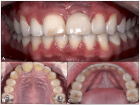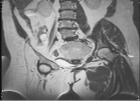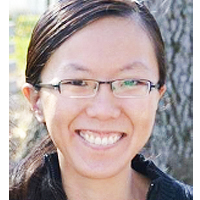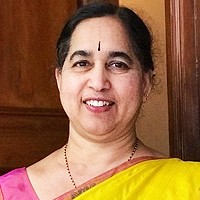Abstract
Research Article
New Approach for Analysing the Discrepancy of Pretherapeutic Tc-99m and Intra-therapeutic I-131 uptake in Scintigraphies of Thyroid Autonomies using a Parametric 3D Analysis Program
Maaz Zuhayra, Marlies Marx, Ulrich Karwacik, Yi Zhao and Ulf Lützen*
Published: 02 January, 2017 | Volume 1 - Issue 1 | Pages: 001-011
Introduction: Radioiodine therapy is a standard procedure in thyroid autonomy treatment. Discrepancies in the visual comparisons of the scintigraphies prepared for this purpose using Tc-99m-O4- and I-131 have been known for years. In this study a new method is used to calculate and perform a quantitative comparison of both uptakes using subtraction analysis and 3D imaging. The results and their causes are discussed together with practice-relevant conclusions for better clinical results.
Material and Methods: The new method was used in 38 patients with thyroid autonomies for the subtraction analysis of standardized pretherapeutic and intratherapeutic scintigraphies. The parametric distribution of activity was calculated absolutely and as a percentage and displayed three-dimensionally. These results were compared with the visual assessment of the different scintigraphies by the experts. Inclusion criteria were pretherapeutic and intratherapeutic hyperthyroidism without medication affecting the thyroid. The time difference between acquiring the scintigraphies was 28 days maximum.
Results: Activity distribution was visually discrepant in 39.5% of cases. 60.5% displayed comparable uptake. The calculated values showed reversed results after applying the new method. The results using our method show a higher rate of calculated discrepancies compared with visual analysis.
Conclusion: Accurate functional imaging of the thyroid is next to further aspects very important in establishing the diagnosis and deciding about the therapy activity for thyroid treatment. In combination with clinical symptoms and laboratory values, Tc-99m-O4 - scintigram can be used for an orientated, preliminary assessment of functional disorders of the thyroid. But because of the higher rate of found discrepancies, the solely use of Tc-99m-O4 - scintigram is not always capable for exact and reliable diagnosis. The known reason for this is most probably due to the different biokinetics of both radiopharmaceuticals, which can be imaged more sensitively with this method. Consequently, a scintigram should be performed in the pretherapeutic radioiodine uptake test. Despite higher costs and radiation exposure, alternatively, pretherapeutic use of other diagnostic iodine isotopes like I-123 or -124 should be discussed, because they could overcome the limitation of the different biokinetics. Following this approach the preliminary assessment using Tc-99m-O4 - scintigraphy can be precised and double checked to improve diagnostic confi dence and treatment results for a better outcome of the patients.
Read Full Article HTML DOI: 10.29328/journal.jro.1001001 Cite this Article Read Full Article PDF
Keywords:
Thyroid; Tc-99m; I-131; Parametric images; Radioiodine therapy; Thyroid autonomy
References
- Schicha H, Schober O. Nuklearmedizin – Basiswissen Und Klinische Anwendung. Vol 7. ed. Stuttgart: Schattauer 2013.
- Dietlein M, Dressler J, Grünwald F, Leisner B, Moser E, et al. [Guideline for radioiodine therapy for benign thyroid diseases (version 4)]. Nuklearmedizin. 2007; 46: 220-223. Ref.: https://goo.gl/Rop4md
- Josef K. Methodik der szintigraphischen Diagnostik bei Schilddrüsen-autonomien. Der Nuklearmediziner. 1983; 3: 175-185.
- Thorsten Kuwert, Frank Grünwald, Uwe Haberkorn, Thomas Krause. Nuklearmedizin - Thieme.de - Thieme Webshop - Thorsten Kuwert, Frank Grünwald, Uwe Haberkorn, Thomas Krause. Thieme Webshop.
- Górowski T, Chomicki OA. Some comparative studies using 99mTc and 131I in thyroid scanning. Nuklearmedizin. 1976; 15: 268-272. Ref.: https://goo.gl/vQyqJ9
- Hotze L-A, Schumm-Draeger P-M, Pfannenstiel P. Schilddrüsenkrankheiten: Diagnose Und Therapie. Berliner Med. Verlag-Anst. BMV; 2003.
- Moser E. Results of radioiodine therapy in different forms of hyperthyroidism in relation to the planned dosage. Aktuelle Radiol. 1992; 2: 179-187. Ref.: https://goo.gl/tyPsTa
- Marinelli LD. Dosage determination in the use of radioactive isotopes. J Clin Invest. 1949; 28: 1271-1280. Ref.: https://goo.gl/HdLsXP
- Strahlenschutz in der Medizin - Richtlinie zur Strahlenschutzverordnung (StrlSchV) dated 26 May 2011 (GMBl. 2011, No. 44-47, p. 867), last amended by BMUB notice dated 11 July 2014 (GMBl. 2014, No. 49, p. 1020). 2011.
- Friston KJ, Holmes AP, Worsley KJ, Poline J-P, Frith CD, et al. Statistical parametric maps in functional imaging: A general linear approach. Hum Brain Mapp. 1994; 2: 189-210. Ref.: https://goo.gl/rjViBv
- Goris ML. Parametric images as a tool for quantitative normative evaluation. Semin Nucl Med. 1987; 17: 18-27.https://goo.gl/kPN6AK
- Kolbert KS, Hamacher KA, Jurcic JG, Scheinberg DA, Larson SM, et al. Parametric images of antibody pharmacokinetics in Bi213-HuM195 therapy of leukemia. J Nucl Med. 2001; 42: 27-32. Ref.: https://goo.gl/Lg8o4a
- Chen Q. Parametric imaging of patient pharmacokinetics. Eur J Nucl Med. 1997; 24: 1369-1373. Ref.: https://goo.gl/aqcX81
- Delorme S, Hoffner S. [Diagnosis of hyperparathyroidism]. Radiol. 2003; 43: 275-283. Ref.: https://goo.gl/LSiERH
- Schommartz B, Cupisti K, Antke C, Schmidt D, Knoefel WT, et al. Localisation of parathyroid glands using planar (99m)Tc-sestamibi scintigraphy. Comparison between subtraction- and dual-phase technique. Nuklearmedizin. 2006; 45: 115-121. Ref.: https://goo.gl/KH3n9Q
- Arnold JE, Pinsky S. Comparison of 99mTc and 123I for thyroid imaging. J Nucl Med. 1976; 17: 261-267. Ref.: https://goo.gl/3Qtx4K
- Atkins HL, Klopper JF, Lambrecht RM, Wolf AP. A comparison of technetium 99M and iodine 123 for thyroid imaging. Am J Roentgenol Radium Ther Nucl Med. 1973; 117: 195-201. Ref.: https://goo.gl/Zw4ZAZ
- Dige-Petersen H, Kroon S, Vadstrup S, Andersen ML, Roy-Poulsen NO. A comparison of 99Tc and 123I scintigraphy in nodular thyroid disorders. Eur J Nucl Med. 1978; 3: 1-4. Ref.: https://goo.gl/FAC3Bz
- Ryo UY, Vaidya PV, Schneider AB, Bekerman C, Pinsky SM. Thyroid imaging agents: a comparison of I-123 and Tc-99m pertechnetate. Radiology. 1983; 148: 819-822. Ref.: https://goo.gl/dfHujP
- Szonyi G, Bowers P, Allwright S, et al. A comparative study of 99mTc and 131I in thyroid scanning. Eur J Nucl Med. 1982; 7: 444-446. Ref.: https://goo.gl/bfxSiU
- Meller J, Becker W. The continuing importance of thyroid scintigraphy in the era of high-resolution ultrasound. Eur J Nucl Med Mol Imaging. 2002; 29 Suppl 2: S425-S438. Ref.: https://goo.gl/5uzxVX
- Schaub W. [Radioiodine studies with 1231]. Nukl Nucl Med. 1976; 15: 259-261. Ref.: https://goo.gl/H1n4IT
- Usher MS, Arzoumanian AY. Thyroid nodule scans made with pertechnetate and iodine may give inconsistent results. J Nucl Med Off Publ Soc Nucl Med. 1971; 12: 136-137. Ref.: https://goo.gl/6Pv9DD
- Freesmeyer M, Kühnel C, Westphal JG. Time effi cient 124I-PET volumetry in benign thyroid disorders by automatic isocontour procedures: mathematic adjustment using manual contoured measurements in low-dose CT. Ann Nucl Med. 2015; 29: 8-14. Ref.: https://goo.gl/H4nkHO
Figures:

Figure 1
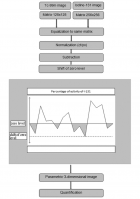
Figure 2

Figure 3
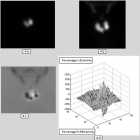
Figure 4
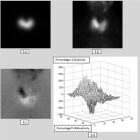
Figure 5
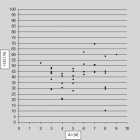
Figure 6
Similar Articles
-
New Approach for Analysing the Discrepancy of Pretherapeutic Tc-99m and Intra-therapeutic I-131 uptake in Scintigraphies of Thyroid Autonomies using a Parametric 3D Analysis ProgramMaaz Zuhayra,Marlies Marx,Ulrich Karwacik,Yi Zhao,Ulf Lützen*. New Approach for Analysing the Discrepancy of Pretherapeutic Tc-99m and Intra-therapeutic I-131 uptake in Scintigraphies of Thyroid Autonomies using a Parametric 3D Analysis Program. . 2017 doi: 10.29328/journal.jro.1001001; 1: 001-011
-
Dr. Saul Hertz Discovers the Medical Uses of Radioiodine (RAI)Barbara Hertz*. Dr. Saul Hertz Discovers the Medical Uses of Radioiodine (RAI). . 2018 doi: 10.29328/journal.jro.1001022; 2: 053-054
-
“Thyroid”: Letter to the Editor, Radioactive Iodine: A Living HistoryBarbara Hertz*. “Thyroid”: Letter to the Editor, Radioactive Iodine: A Living History. . 2024 doi: 10.29328/journal.jro.1001058; 8: 001-002
Recently Viewed
-
Sinonasal Myxoma Extending into the Orbit in a 4-Year Old: A Case PresentationJulian A Purrinos*, Ramzi Younis. Sinonasal Myxoma Extending into the Orbit in a 4-Year Old: A Case Presentation. Arch Case Rep. 2024: doi: 10.29328/journal.acr.1001099; 8: 075-077
-
Timing of cardiac surgery and other intervention among children with congenital heart disease: A review articleChinawa JM*,Adiele KD,Ujunwa FA,Onukwuli VO,Arodiwe I,Chinawa AT,Obidike EO,Chukwu BF. Timing of cardiac surgery and other intervention among children with congenital heart disease: A review article. J Cardiol Cardiovasc Med. 2019: doi: 10.29328/journal.jccm.1001047; 4: 094-099
-
Advancing Forensic Approaches to Human Trafficking: The Role of Dental IdentificationAiswarya GR*. Advancing Forensic Approaches to Human Trafficking: The Role of Dental Identification. J Forensic Sci Res. 2025: doi: 10.29328/journal.jfsr.1001076; 9: 025-028
-
Scientific Analysis of Eucharistic Miracles: Importance of a Standardization in EvaluationKelly Kearse*,Frank Ligaj. Scientific Analysis of Eucharistic Miracles: Importance of a Standardization in Evaluation. J Forensic Sci Res. 2024: doi: 10.29328/journal.jfsr.1001068; 8: 078-088
-
Toxicity and Phytochemical Analysis of Five Medicinal PlantsJohnson-Ajinwo Okiemute Rosa*, Nyodee, Dummene Godwin. Toxicity and Phytochemical Analysis of Five Medicinal Plants. Arch Pharm Pharma Sci. 2024: doi: 10.29328/journal.apps.1001054; 8: 029-040
Most Viewed
-
Evaluation of Biostimulants Based on Recovered Protein Hydrolysates from Animal By-products as Plant Growth EnhancersH Pérez-Aguilar*, M Lacruz-Asaro, F Arán-Ais. Evaluation of Biostimulants Based on Recovered Protein Hydrolysates from Animal By-products as Plant Growth Enhancers. J Plant Sci Phytopathol. 2023 doi: 10.29328/journal.jpsp.1001104; 7: 042-047
-
Sinonasal Myxoma Extending into the Orbit in a 4-Year Old: A Case PresentationJulian A Purrinos*, Ramzi Younis. Sinonasal Myxoma Extending into the Orbit in a 4-Year Old: A Case Presentation. Arch Case Rep. 2024 doi: 10.29328/journal.acr.1001099; 8: 075-077
-
Feasibility study of magnetic sensing for detecting single-neuron action potentialsDenis Tonini,Kai Wu,Renata Saha,Jian-Ping Wang*. Feasibility study of magnetic sensing for detecting single-neuron action potentials. Ann Biomed Sci Eng. 2022 doi: 10.29328/journal.abse.1001018; 6: 019-029
-
Pediatric Dysgerminoma: Unveiling a Rare Ovarian TumorFaten Limaiem*, Khalil Saffar, Ahmed Halouani. Pediatric Dysgerminoma: Unveiling a Rare Ovarian Tumor. Arch Case Rep. 2024 doi: 10.29328/journal.acr.1001087; 8: 010-013
-
Physical activity can change the physiological and psychological circumstances during COVID-19 pandemic: A narrative reviewKhashayar Maroufi*. Physical activity can change the physiological and psychological circumstances during COVID-19 pandemic: A narrative review. J Sports Med Ther. 2021 doi: 10.29328/journal.jsmt.1001051; 6: 001-007

HSPI: We're glad you're here. Please click "create a new Query" if you are a new visitor to our website and need further information from us.
If you are already a member of our network and need to keep track of any developments regarding a question you have already submitted, click "take me to my Query."








